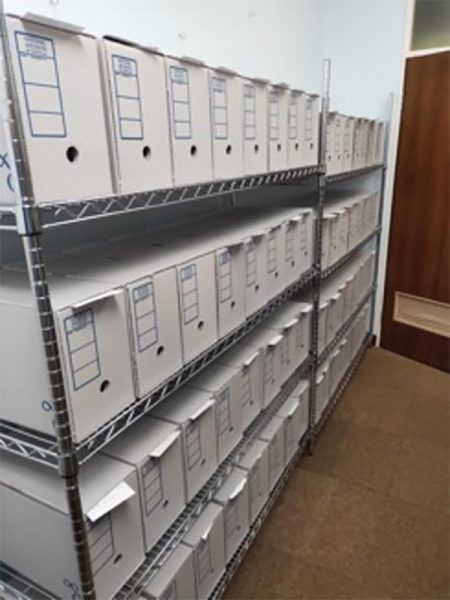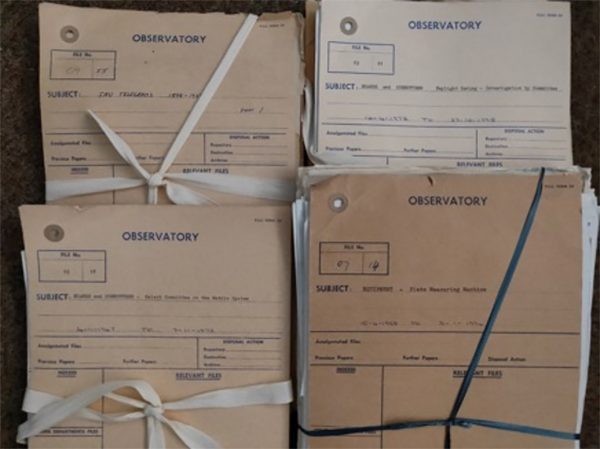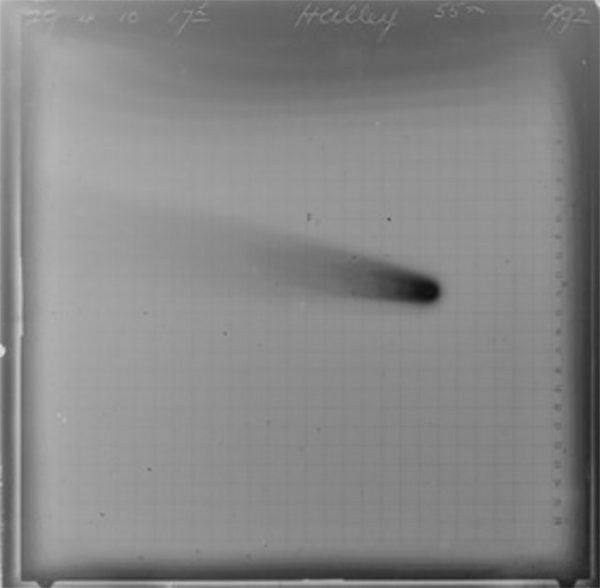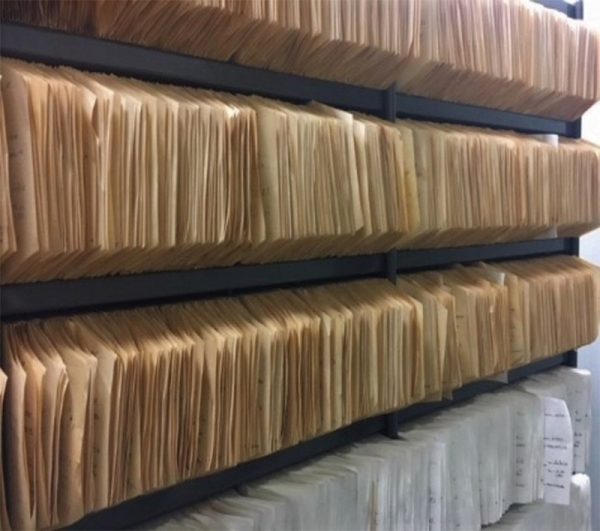
In November 2018, Perth Observatory was successful in obtaining grants from Lotterywest for the preservation of over 100 years of paper-based records and astronomical photographic glass plates, both of which will ensure the important astronomical history of Western Australia remains available for future generations.
Paper-Based Records
From 1896 until 2013, Perth Observatory maintained all its own paper-based records which covered everything from administration to astronomical programs and correspondence with other observatories throughout the world. Over and above astronomy, the Observatory was called upon to provide daily services to the WA public such as accurate timekeeping, tidal measurements, meteorology, seismology and surveying.
Until recently, the records were not stored with preservation in mind. However, with the award of the recent Lotterywest grant, POVG Heritage volunteers are now able to ensure that the records can be appropriately stored and preserved. The grant will allow paper-based records to be stored in approved acid-free boxes away from light, on appropriate shelving, in a room that is environmentally monitored and controlled for temperature and humidity in line with recent recommendations from expert curators funded through National Library of Australia ‘Significance’ and ‘Needs’ assessments.
Once completed, the catalogue of the record titles and topics will be published to enable researchers to review the records and, if required, apply to access them first-hand at Perth Observatory.

Good progress has already been made by the Heritage team supported by the Facilities team. The Historians office has been cleared out of unnecessary items to make way for new shelving and archive boxes, and POVG Librarian Carol Wolf is busy reviewing and archiving the loose paper-based records. We anticipate this project will be completed by the end of 2019.
Photographic Glass Plates

The Lotterywest grant will also enable the digitisation of around 12,000 photographic glass plates that were taken at the Perth Observatory on the 120-year-old Astrographic telescope from 1901 until 1999. In addition, glass plates from the Lowell Observatory Telescope (Arizona) that was installed at the Perth Observatory in 1971 to assist in the exploration of space, will also be scanned, as well as plates from the University of Western Australia telescope installed in 1967 to provide the university students with an introduction to astrophysics.
The Astrographic plates are significant as they provide not only scientific records of 100 years of Southern Hemisphere astronomy but also constitute a valuable database for current research into Time Domain Astronomy, or the ability to look at snapshots of the heavens over those 100 years.
The grant will allow the POVG to obtain a high-resolution digital scan of each photographic plate such that the data that resides on these plates will not be lost due to the failure of the photographic emulsion, breakage, or other catastrophic events (e.g. bushfire). The plates will then be appropriately stored, including replacement of the protective acid-free paper.

The grant will allow environmental control of the room in which the plates are being stored, including temperature and humidity monitoring, plus the purchase of 3 new fireproof safes to house the plate collection. These actions are in line with recent recommendations from the National Library of Australia funded ‘Significance’ and ‘Needs’ assessments.
Once completed, the digitised data will be made accessible to enable researchers to search and request copies of the digital data for use in scientific research.
Good progress has already been made by the Heritage and Facilities teams. The Plate Measuring Room has been transformed into a scanning room complete with 3 workstations housing new PCs and scanners, whilst the Plate Room has been cleared of unnecessary items ready for placement of the fireproof safes. Five POVG volunteers applied for the position of “Plate Scanner” and have commenced their training with Project Lead and POVG Historian, Dr Craig Bowers. It is anticipated that scanning will commence in April 2019 and will continue for approximately 3 years.





